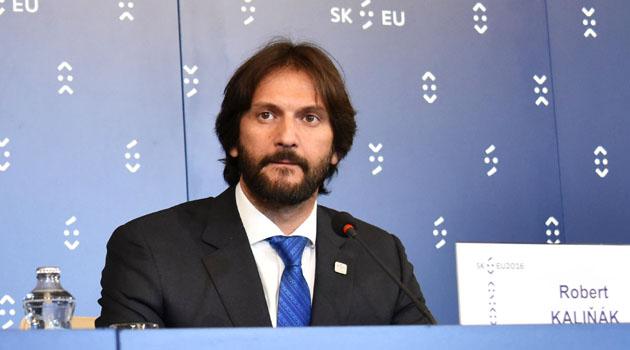Slovak Interior Minister, Police President agree filmed intervention against Romani residents must be investigated

Speaking on 25 May, Slovak Interior Minister Robert Kaliňák said he did not yet want to assess the intervention undertaken by police officers in Zborov recently during which they were filmed assaulting young children. The minister explained that there is no video footage available capturing the conflict among the Romani people there prior to the police arriving at the scene – officers forced some eyewitnesses to their intervention to erase the video footage from their mobile phones.
The Interior Minister said he considers the only correct step to be for the Police Inspectorate to investigate the incident, which Slovak Police President Tibor Gašpar said would begin immediately. “I have no opinion because half of the video is missing,” the Interior Minister told the Slovak press.
“I cannot assess what I haven’t seen, and what preceded the intervention is determinative – why the police officers went there, and why they ended up on the opposite side in the vicinity of a person who was lying there injured or in the aftermath of some kind of conflict,” the minister said. “If I have been correctly informed, the police officers were called to the scene because of a conflict within the community, which means they were called there to secure public order at the scene and separate the clashing camps who were fighting each other, which we cannot see, because that part of the video is missing.”
According to information reported by the European Roma Rights Centre (ERRC) and news server Romea.cz, the police patrol was called on 16 April after a physical conflict broke out between just two brothers, not between two groups. After viewing the video, Slovak Police President Tibor Gašpar told public broadcaster RTVS that “Some of these interventions appear obviously disproportionate to me.”
“I have sent the video to the Police Inspectorate, which will immediately begin a proceedings to investigate the entire intervention,” Gašpar told Slovak public broadcaster RTVS. Kaliňák also said he himself is “neither a detective nor an expert” and that sending the case to the Police Inspectorate “is the only correct step that can be taken in this matter as to whether there are any doubts about it and whether it is exactly as it should be”.
Slovak Rapporteur on the Romani Community says intervention was inadequate
Ábel Ravasz, the Rapporteur to the Government of the Slovak Republic on the Romani Community, issued a statement on the brutal police intervention in Zborov that same day that said: “What happened in Zborov is not acceptable. According to the available video footage, the police were unable to deal with the situation at the scene. The entire intervention gives the impression of being nothing but chaos.”
“According to the information we were originally provided about this incident, the situation was caused by a dispute between two brothers that grew into an exchange of physical assaults. We were initially told that because the conflict had been followed by the entire community, the police patrol called to the scene had been unable to reach the main actors. From this video footage it is apparent that the police did reach them and that the police officers’ interventions at the scene of the conflict were inadequate and targeted children and elderly people,” Ravasz said in his statement.
The video footage capturing the aggressive behavior by the police against the Romani residents of Zborov has also been commented on by the previous Rapporteur on the Romani Community, Romani politician Peter Pollák, who posted to his Facebook profile that the police “angrily used their batons, even against children. An aggressive police officer brutally pushes an older woman to the ground. They attack despite the fact that the Romani people are not offering any resistance.”
According to the ERRC, the police reaction to the conflict between the two brothers was to pull out their batons and spark fear among the residents by beating children, men and women who were just bystanders. Three people including minors had to seek medical aid after the police intervention.
The person who provided the video to the ERRC ignored the police officers’ call to delete it. “What we recorded happened in public, why should I delete it?” the eyewitness told the ERRC.
